Electronics Basics: Prototyping using breadboards
In this image you can see a simple circuit with a battery, a resistor and a LED.
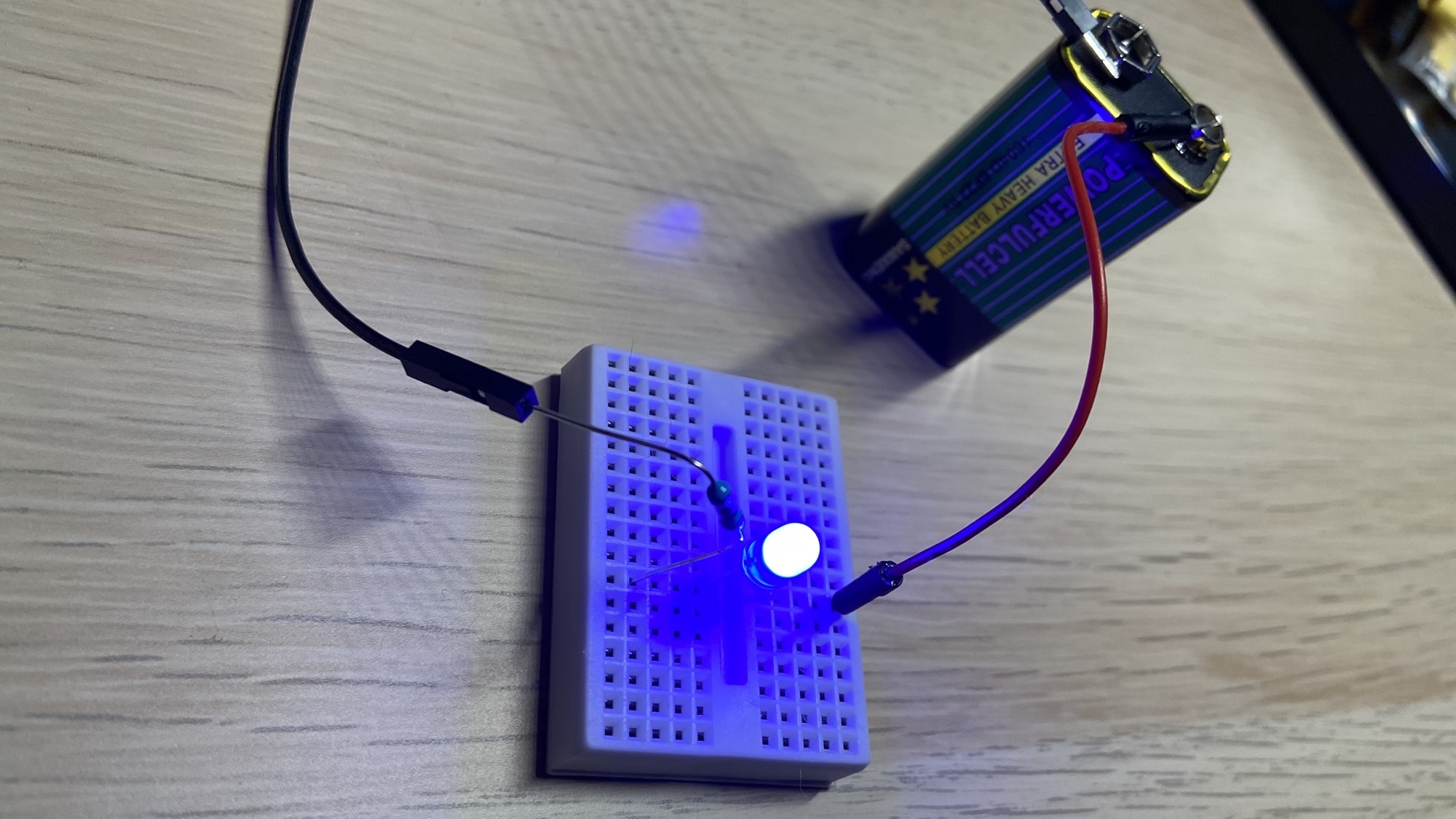
The elements are displayed inside a tiny white box called breadboard:
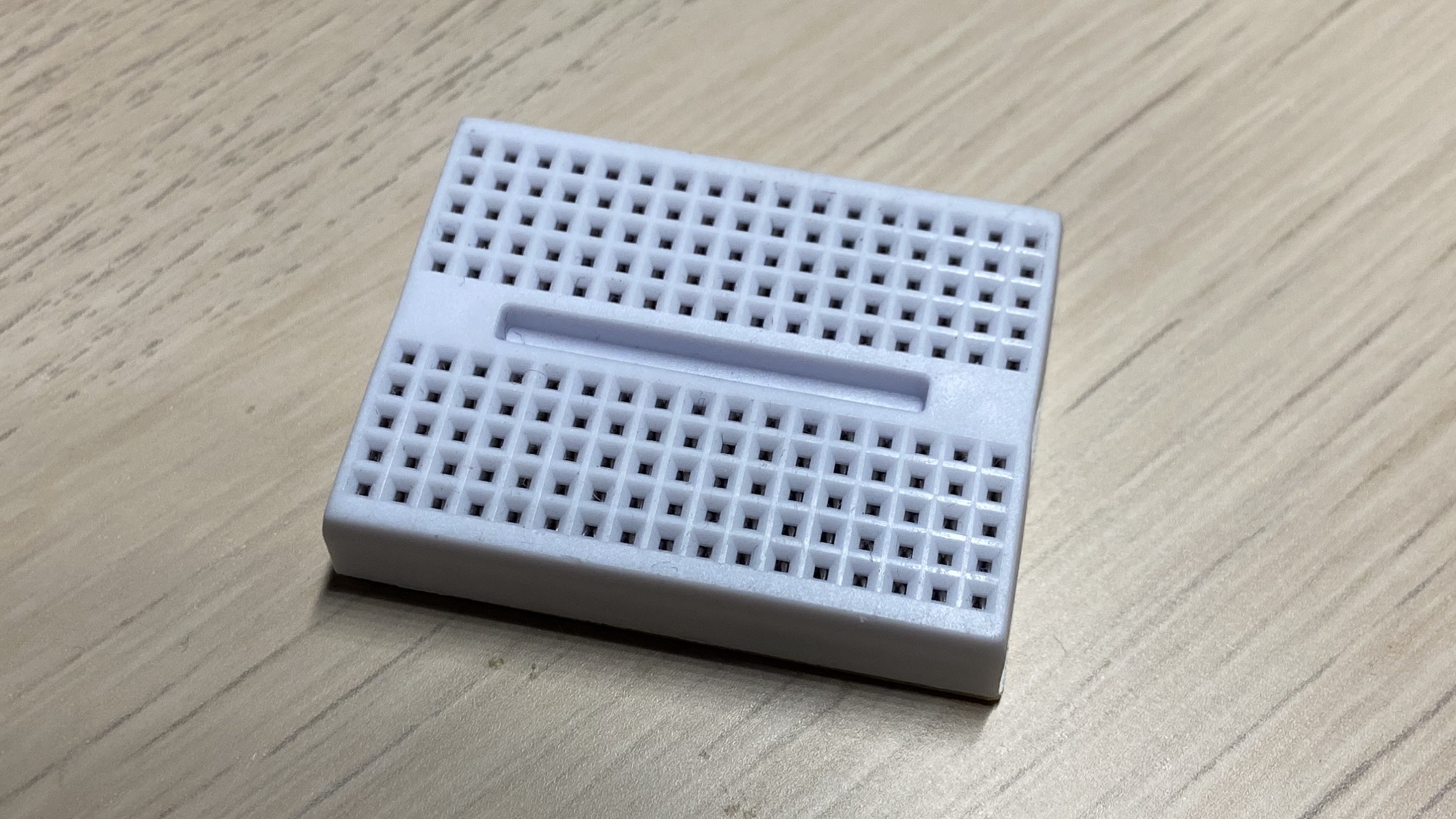
The breadboard has 17 sets of 5 interconnected elements on one side, and 17 sets of interconnected elements on another side.

Under the surface, the 5 holes in a set are connected with each other, so we can easily create electric connections.
This is a tiny board useful for simple prototyping.
This is a bigger board:
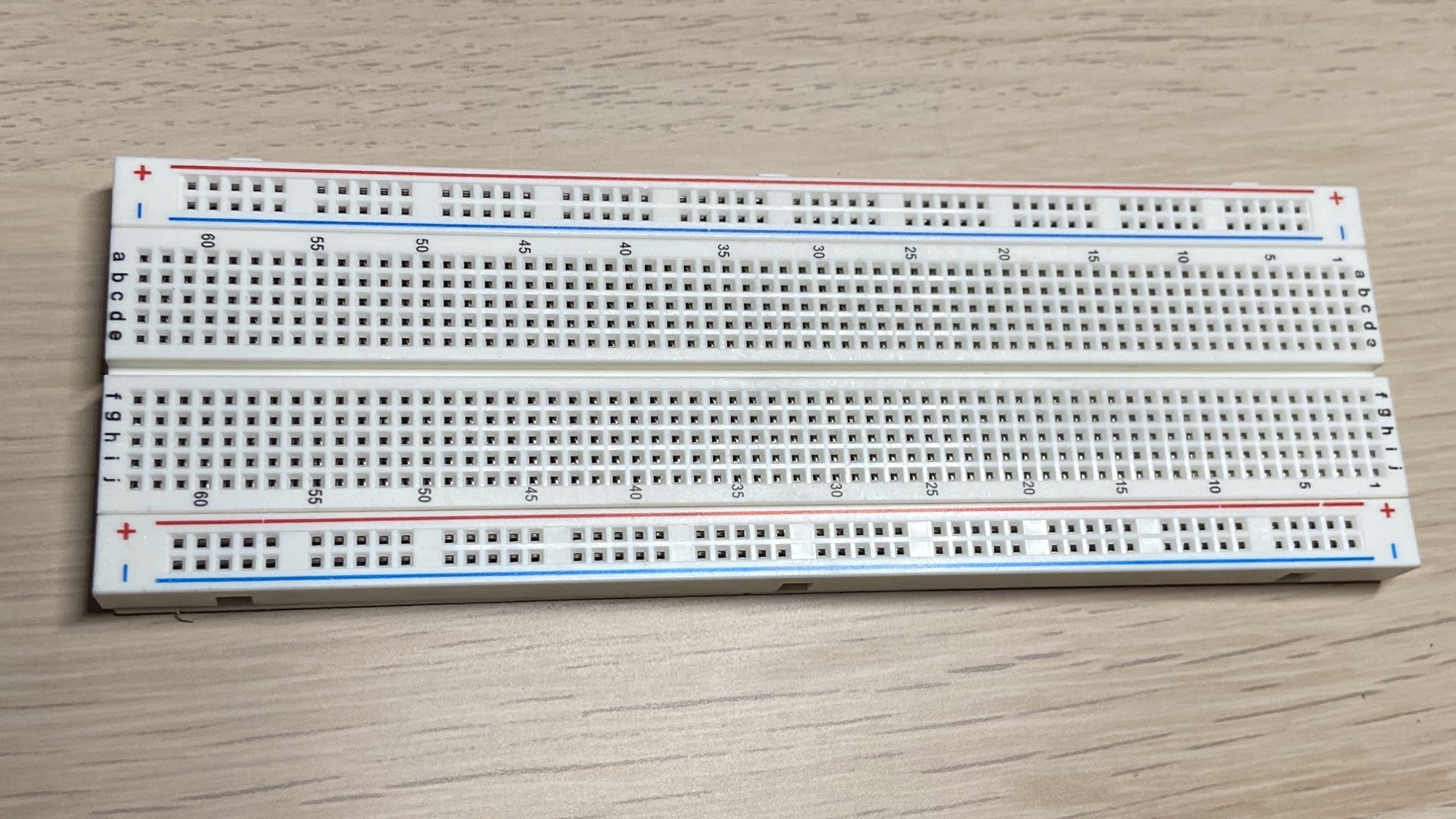
The principle is the same, and we have more elements on the outer border, the ones wrapped inside the red and blue lines:
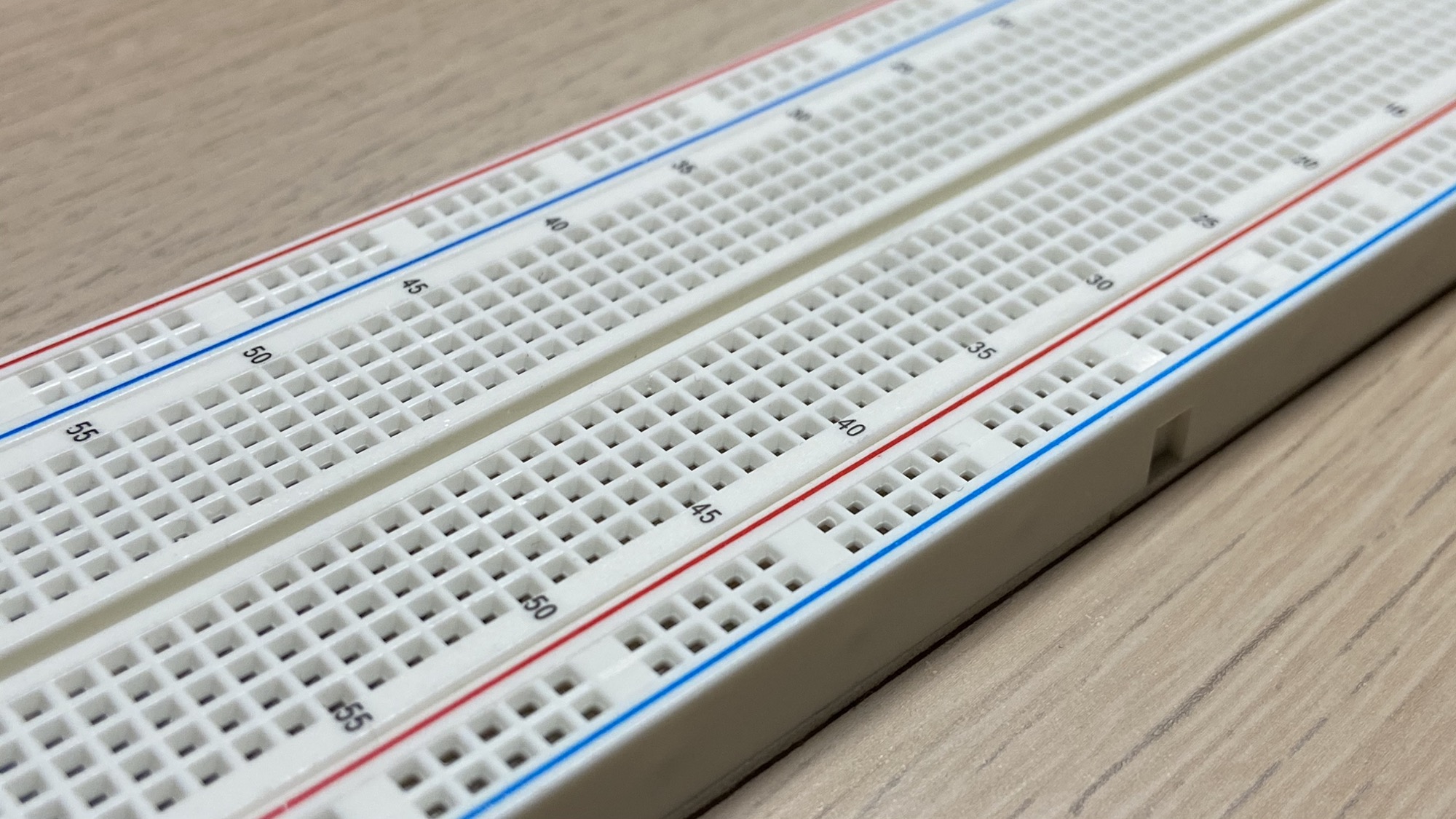
In this case the items are connected longitudinally, orthogonally to the 5-elements sets in the inside of the board:

They are used to connect the positive and negative poles of the battery (or any other power source) to the board, so your elements on the board have easy access to them.
It’s common to use red wires for the + positive pole and black wires for the - negative pole:

You typically prototype a circuit using a breadboard:
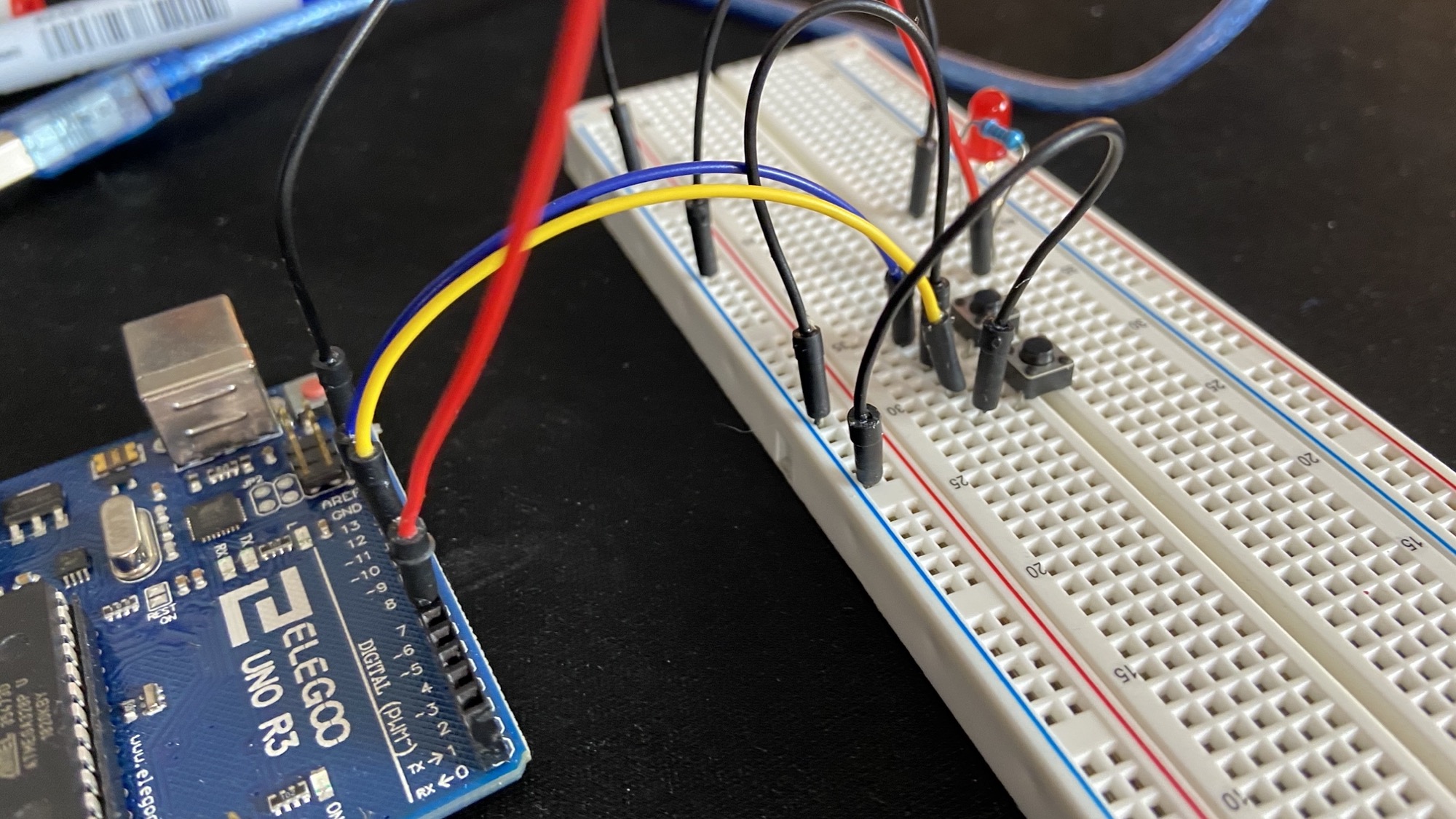
and once you’re ready to move on you can solder it into a perforated board.
download all my books for free
- javascript handbook
- typescript handbook
- css handbook
- node.js handbook
- astro handbook
- html handbook
- next.js pages router handbook
- alpine.js handbook
- htmx handbook
- react handbook
- sql handbook
- git cheat sheet
- laravel handbook
- express handbook
- swift handbook
- go handbook
- php handbook
- python handbook
- cli handbook
- c handbook
subscribe to my newsletter to get them
Terms: by subscribing to the newsletter you agree the following terms and conditions and privacy policy. The aim of the newsletter is to keep you up to date about new tutorials, new book releases or courses organized by Flavio. If you wish to unsubscribe from the newsletter, you can click the unsubscribe link that's present at the bottom of each email, anytime. I will not communicate/spread/publish or otherwise give away your address. Your email address is the only personal information collected, and it's only collected for the primary purpose of keeping you informed through the newsletter. It's stored in a secure server based in the EU. You can contact Flavio by emailing flavio@flaviocopes.com. These terms and conditions are governed by the laws in force in Italy and you unconditionally submit to the jurisdiction of the courts of Italy.